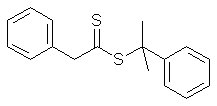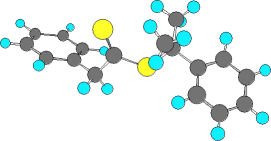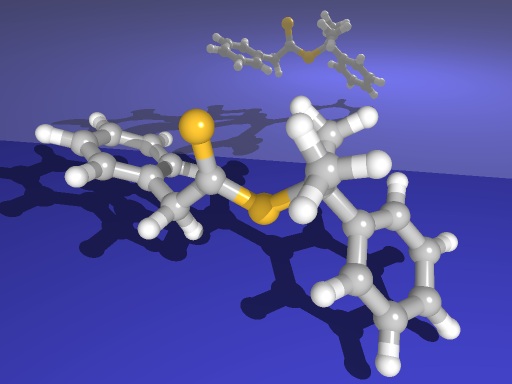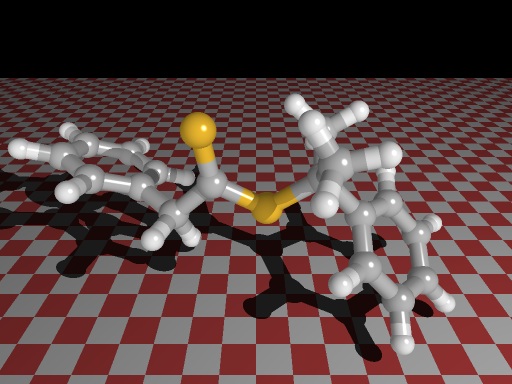The trail to making these nice 3D renderings starts with a flat structure drawn in ISIS/Draw (which IMHO is the best structure drawing program available, and its free for academic and personal use). From there, a 3D structure is prepared using Chem 3D from the ChemOffice suite. The only reason I use it is because I have a free copy of an old version from the ChemWeb membership...
 |
 |
|
| A 2D structure prepared in ISIS/Draw | A 3D structure prepared from the ISIS/Draw structure using Chem 3D. |
The image from Chem 3D might be a nice 3D representation, but I'm sure we can do a lot better than that.... From Chem 3D, the file is exported in Protein Database (PDB) format. While this format isn't native to anything that I actually use, it turns out to be a suitable interchange format for the next step.
Using the tool ppovit the PDB file is converted in to a POV-Ray file. The PDB file consists of a series of entries (1 per atom) detailing where it is in space and what type of atom it is (carbon, hydrogen etc). There are also entries that say where the bonds are between the atoms. The ppovit tool converts each atom into a sphere and each bond into a cylinder... and ray-tracers just love spheres and cylinders!
With a little hand editing to put in a background, extra lights, increase the reflection off the spheres and change the viewpoint, it is possible to end up with some pretty nice pictures...
 |
 |
And in case you're wondering, this molecule sometimes goes by the name "2-phenyl-prop-2-ylphenyl dithioacetate", or PPPDTA to its friends. I'm interested in it because it can do some pretty interesting things to polymerisation reactions.
Last edited: Wednesday June 23, 2004
Copyright © 1996-2014 Stuart Prescott